Why Bryce's Work Appeared on The Simpsons
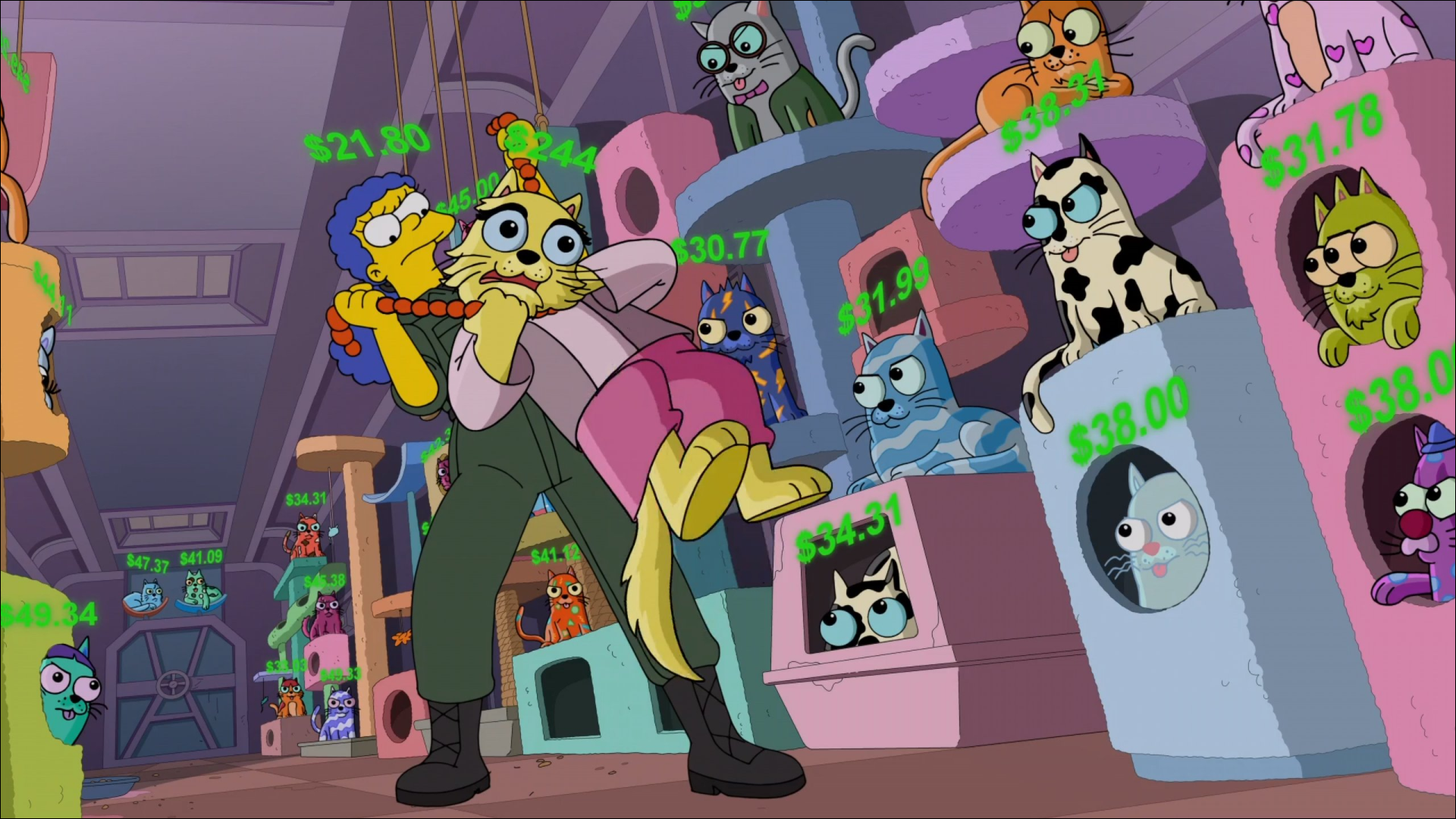
This is the story of how my work ended up on The Simpsons.
"One day, I'll see your work on The Simpsons!"
— Something my high school guidance counselor said, assumedly while holding a monkey paw
In November of 2017, I co-founded CryptoKitties with a venture studio called Axiom Zen.
The goal of CryptoKitties was to provide a practical example of what non-fungible tokens (NFT) can do, and position CryptoKitties as a mascot for the underlying technology. The project was the first NFT to reach mainstream audiences, accruing millions in profits and motivating a billion-dollar valuation for the company spun out of its success, Dapper Labs.
In November of 2023, nearly six years after CryptoKitties launched, the cats appeared on The Simpsons "Treehouse of Horror XXXIV" as The Cuddle Kittens. In the sequence, Marge moves through a digital train murdering various NFTs. The Cuddle Kittens explain: “what you call mindless slaughter, crypto bros call disruption, and pour gas into it.”
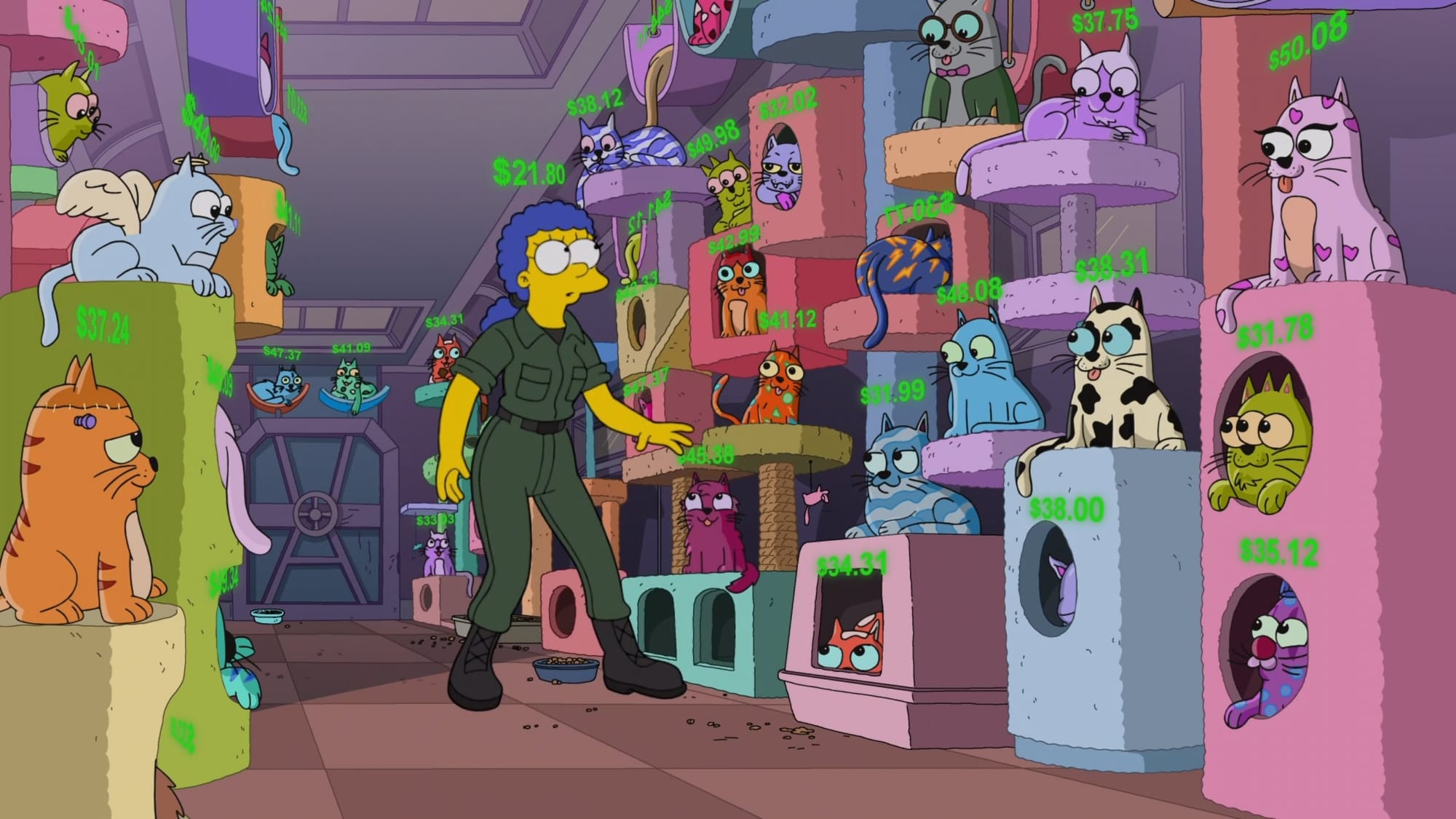
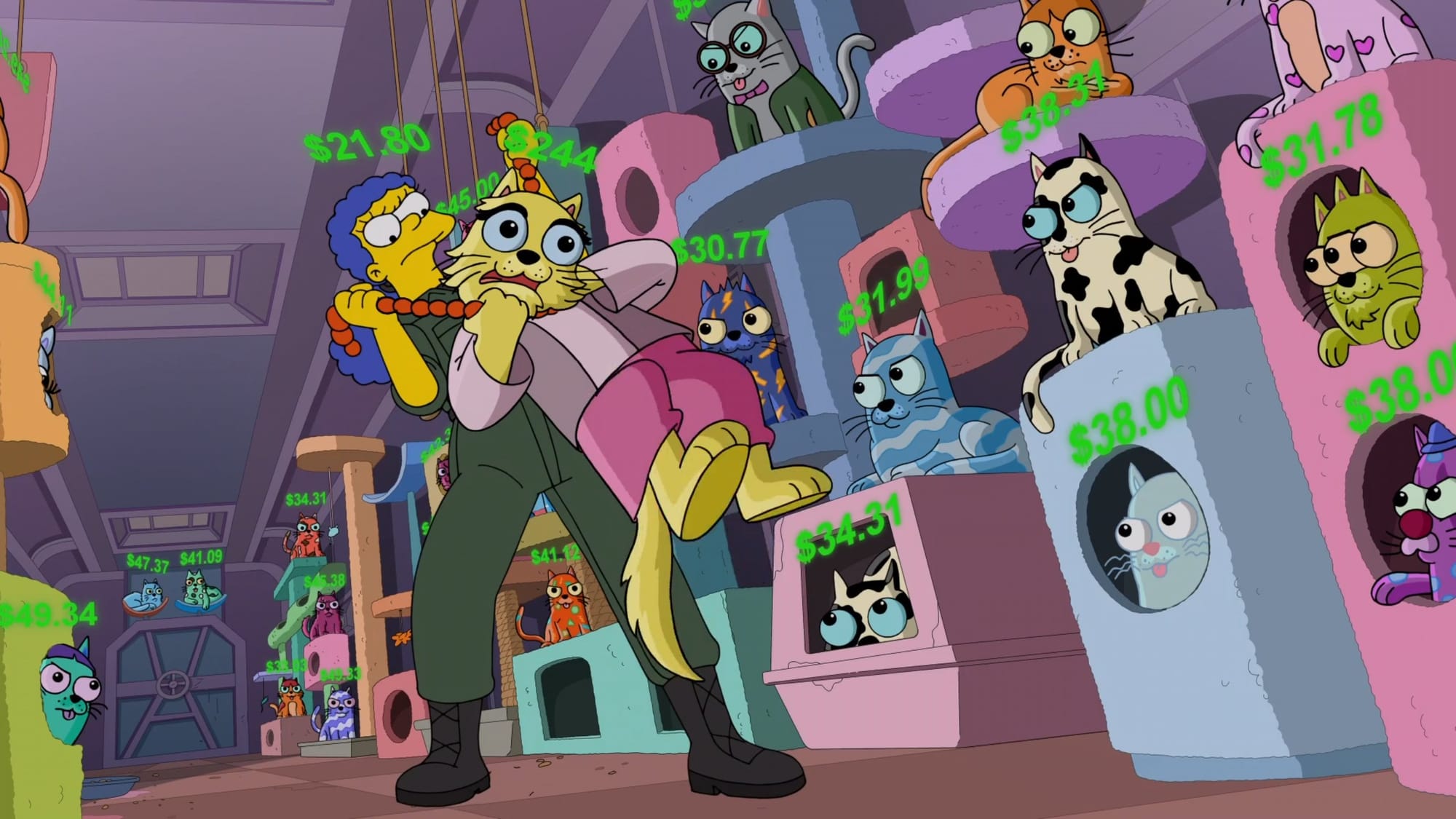
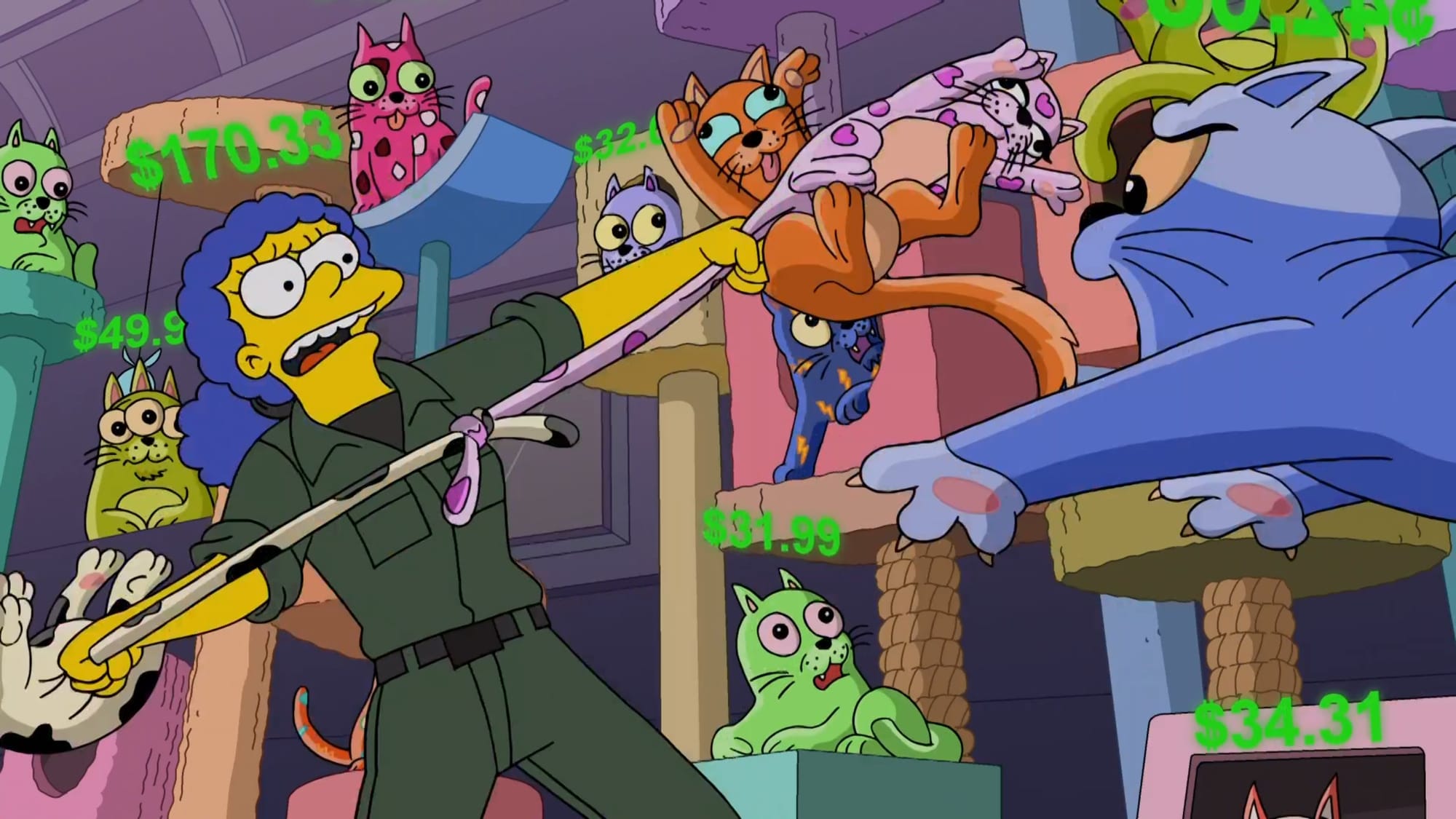
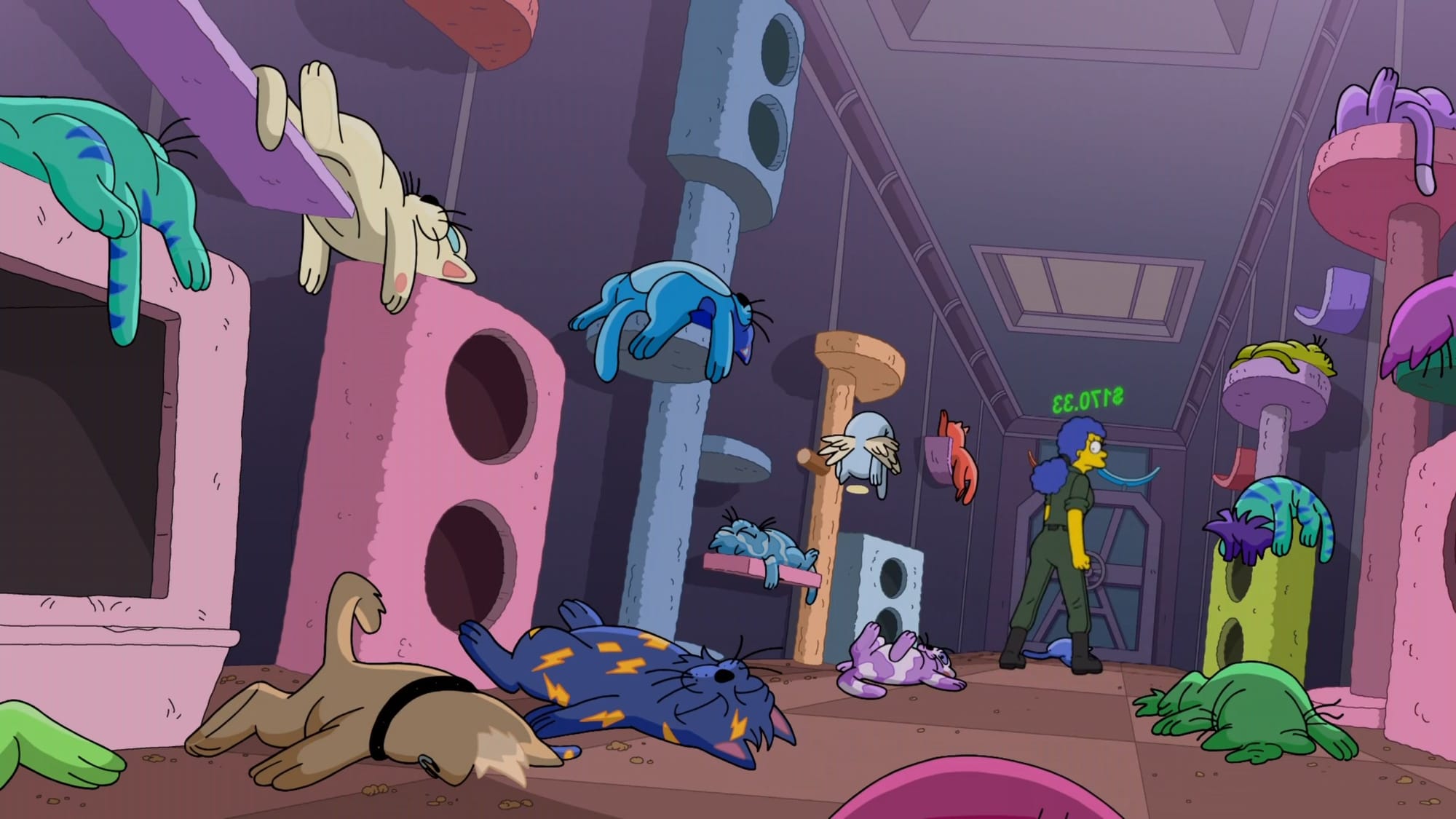
Marge Simpson murdering the Cuddle Kittens in a segment of "Treehouse of Horror XXXIV" parodying Bong Joon-ho's Snowpiercer.
So why did Marge Simpson murder my cats?
CryptoKitties succeeded. It proved its point, catalyzing a startup, and becoming one of the most distinct brands in crypto.
When it launched, crypto bros were singing the praises of mainstream success. They were also sending me death threats because CryptoKitties traffic accounted for roughly 15-25% of all transactions around launch, stymying fundraising around initial coin offerings (ICOs).
At launch, 25% of players were new to the technology. My favourite message was a father and daughter that played the game together to understand how blockchain works. My least favourite included my home address.
When Dapper Labs took venture capital, industry die-hards rallied against it. When “nifty” started becoming a popular term in the crypto community, Dapper Labs attempted a trademark that did not go over particularly well with that same community.

NFTs can be anything, and "anything" can be garbage.
NFTs have the potential to be almost anything, and that potential is what attracted gobs of money and attention towards NFTs.
Conceptually, NFTs are an empty vessel that we can fill with our hopes and dreams. Practically, it's where those hopes and dreams soured. It's no longer a big blank space to fill with your most salient sales pitch; what's been proven is no longer appetizing.
When a CryptoKitties co-founder left the company to create their first independent video game, the perception of NFTs was so negative that they hid their experience while building and promoting their game. (I'm not linking the game because I do not want to undo their work in this regard, but it is very good and I will send a copy to the first person to mention this little aside.)
One of CryptoKitties first players turned into one of the team’s best hires. They understood and believed in the concept. They would eventually leave the team to found Doodles, a project that was also featured in the same Treehouse of Horror segment as my cats. They announced they were no longer an NFT project almost half a year before the segment ran.
Did the cats deserve to get murdered?
NFTs are not necessarily good or bad. An NFT could be almost anything—or, at least, they could have been.
But in the six years since CryptoKitties launched NFTs into the mainstream, "almost anything" has amounted to almost nothing positive in terms of public perception.
There's a lot of nuance that could be argued regarding NFTs. But mascots don’t get to have nuance. For better or worse, CryptoKitties are emblematic of their underlying technology.
